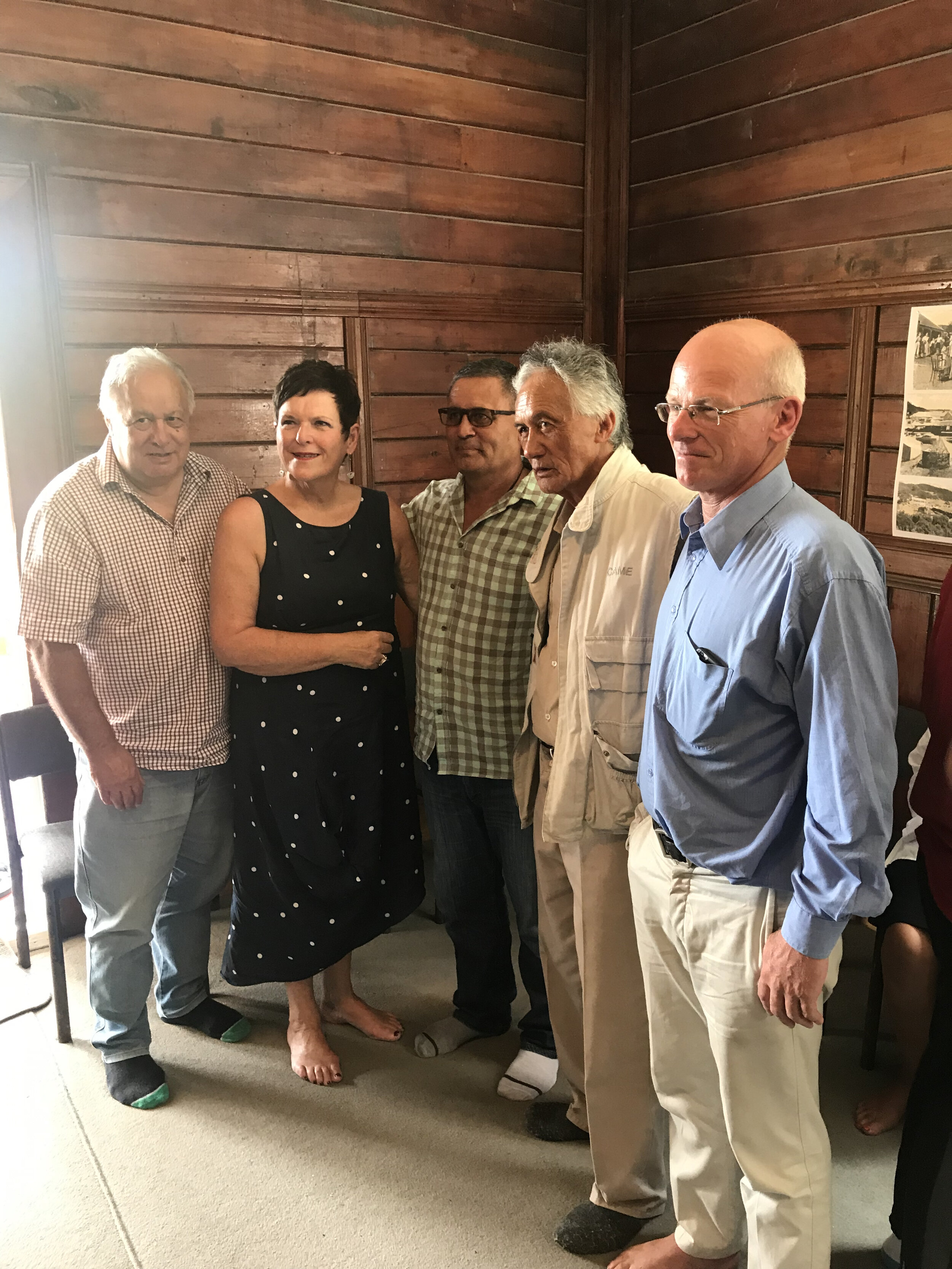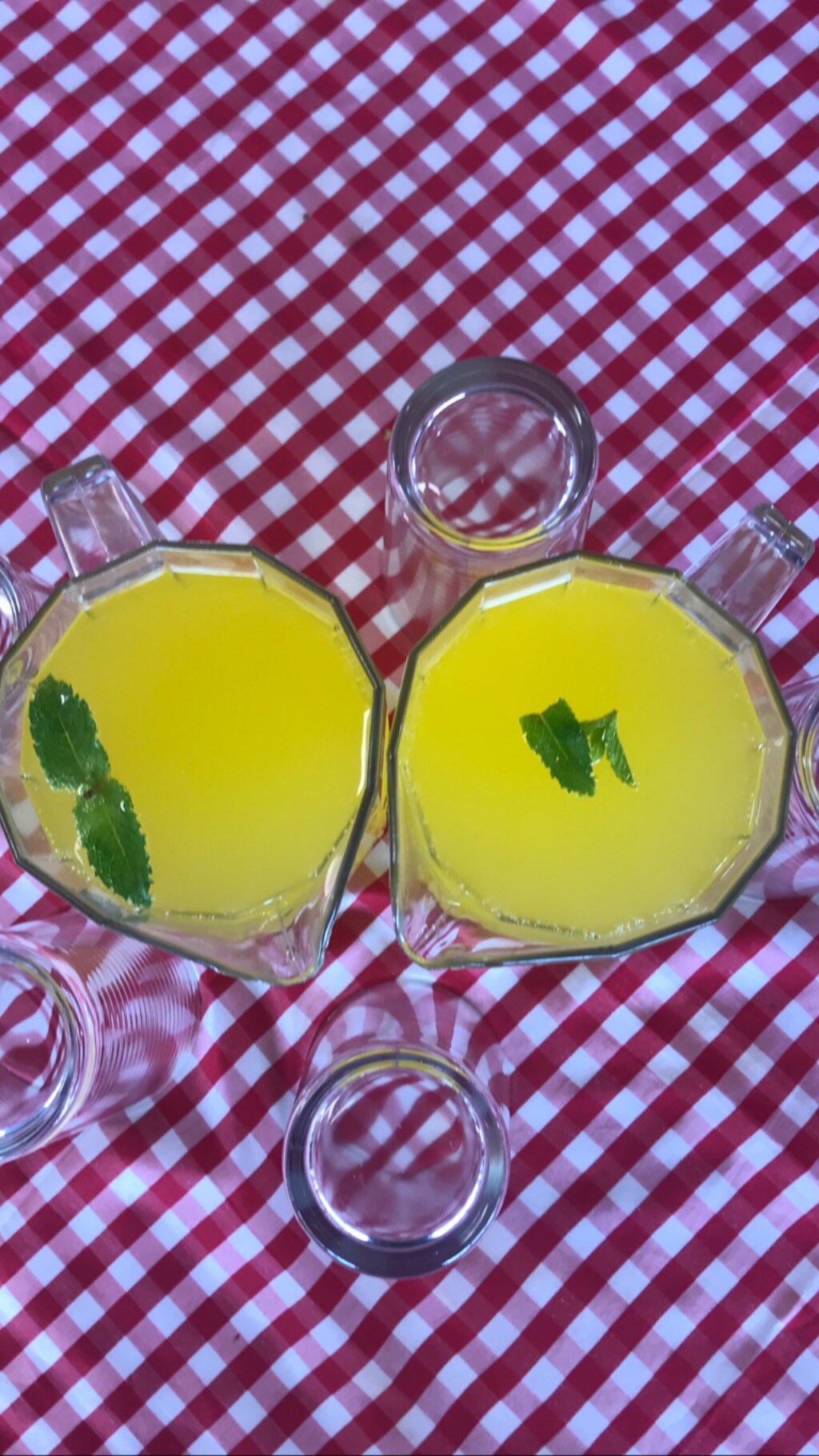The Mangahawea Bay Partnership Project: exploring the story of Pacific voyaging and navigation
The extraordinary stories unfolding in a small Northland bay are helping to tell the wider story of 1000 years of Pacific voyaging and navigation that brought the first people to Aotearoa New Zealand
Bay of Islands (image by Jacqui Gibson).
It’s Saturday in the Bay of Islands. We’re nosing our way into Kent Passage on a 10-metre launch captained by amateur historian and trusted Heritage New Zealand volunteer Jack Kemp.
The ocean is twinkling in the morning sun as we briefly slow to photograph Black Rocks, a striking line of basalt lava rocks believed to be around 1.2 million years old.
We don’t stop for long. There are other early sites to shoot on this spectacular morning and the clock is ticking.
Shortly our party of four is due at Te Rawhiti Marae for a half-day wānanga hosted by Bay of Islands hapū Ngāti Kuta and Patukeha.
On transport is Jack; photographer Marcel Tromp and I are documenting events. Senior archaeologist Dr James Robinson is presenting findings from the Mangahawea Bay Partnership Project.
“It’s an extraordinary project to be part of,” shouts James over the rumble of the boat’s engine.
Pointing to the pōhutukawa-fringed foreshore of Mangahawea Bay, on Moturua Island’s northwesterly side, James turns to me.
“Just imagine if it were your tīpuna who set foot there, ending millions of years of human endeavour that started in Africa. That’s how it is for Ngāti Kuta and Patukeha. This bay represents the arrival of their Polynesian ancestors and one of the last places settled on Earth.”
The Mangahawea Bay Partnership Project was set up in 2016 by Ngāti Kuta and Patukeha and three Crown agencies: DOC, the University of Otago and Heritage New Zealand Pouhere Taonga.
Each partner wanted to know more about Mangahawea Bay’s early human history and figured that working together to combine skills and knowledge would help.
On the one hand, Crown agencies had pulled together enough archaeological evidence from surveys carried out in the 1960s and ’70s – and an unpublished excavation in 1981 – to believe that Mangahawea Bay was an early Polynesian settlement site.
On the other, local hapū had clues to the site’s ties to Polynesia embedded in their oral histories, genealogy stories, proverbs and place names.
Each had pieces of the puzzle – but no-one knew the whole story.
Anchoring in Kaingahoa Bay, outside Te Rawhiti Marae, we go ashore in Jack’s rubber dinghy, joining manuhiri gathering for the morning pōwhiri. All up, we are a group of around 100 people.
There’s a good turnout from the project team. Kaumātua Matutaera (Matu) Te Nana Clendon and Robert Willoughby, the hapū elders overseeing the project, are here. DOC senior ranger Andrew Blanshard, who spent a decade collating archaeological evidence related to the site, is here, together with James, who is the lead archaeologist on the project.
Ngāti Kuta and Patukeha whānau are here for a project update and to discuss how to share the findings.
An overseas film crew making a documentary on New Zealand rugby chanced upon the wānanga and have gained permission to record goings-on.
Senior officials from the Ministry of Culture and Heritage have travelled north to make a plug for sharing the story of Mangahawea Bay at the Tuia 250 commemorations over the summer. Dame Jenny Shipley and Hoturoa Barclay-Kerr, co-chairs of the Tuia 250 National Coordinating Committee, are leading the charge.
As the oratory unfolds, we learn that both scientists and tangata whenua are confident that Mangahawea Bay is a place of very early Polynesian settlement in New Zealand. Two archaeological digs carried out as part of the project in 2017 and 2019 have unearthed compelling proof.
James tells us that excavated hāngi pits, middens and gardens reveal evidence of foods such as moa and taro that were eaten for only a short time after human arrival.
Radiocarbon-tested artefacts, such as moa bone fishhooks and pāua shell pendants, date the island’s human habitation to the 1300s.
A third and final archaeological excavation planned for January 2020 should further confirm timelines and finally attest to the site’s historic significance.
“Your ancestors came here to settle,” says James, addressing the small crowd perched on rows of office chairs and wooden benches as a sleeping child quietly snores on her aunty’s lap in front of me.
“Just as your stories suggest, they were explorers. They were experienced, skilled navigators pushing the boundaries of knowledge and imagination, much like those who were first on the Moon.”
Matu, who was born and raised on Moturua Island, grew up listening to stories of his Polynesian ancestry. The science is exciting, he explains to me later over a cup of tea, but simply corroborates what many of his people already knew.
“Many local names are like footprints left by our Pacific ancestors. There’s Poroporo Island, referencing Bora Bora in Tahiti. But probably the most significant name you’ll find around here belongs to a tiny island off Mangahawea Bay. The island of Rangiātea references the sacred site of Ra’iātea, the cultural centre of the Polynesian world.”
Meanwhile, Rakaumangamanga Cape Brett, just 10 kilometres north of Te Rawhiti, is one of the waypoints of the Polynesian triangle referenced in voyaging oratory alongside Rapanui Easter Island and Taputapuātea on Ra’iātea.
When former prime minister Jenny Shipley takes the floor to speak, she encourages Ngāti Kuta and Patukeha to promote the story of Mangahawea Bay to the rest of New Zealand during Tuia 250.
Tuia 250, a national event that began in Tūranga Gisborne on 5 October, marks 250 years since British Lieutenant James Cook first sailed to New Zealand on HMB Endeavour.
Instead of focusing on Cook, she says, Tuia 250 gives communities such as Rawhiti a chance to promote the untold stories of the country’s settlement history.
In 1769 Cook anchored off adjacent Motuarohia Island, accompanied by British naturalist Joseph Banks and Polynesian navigator and tohunga Tupaia. That much is well known.
What’s less well known, says Matu, is that the British crew’s ability to come ashore and safely trade items for food was made possible because of the similar culture and language that Tupaia shared with local Māori – and the brokering role Tupaia played between Māori and the British.
“We know from our stories that our people took Tupaia away for several days before returning him to the Endeavour. They recognised his status. They were able to communicate with him. They gave him and his entourage safe passage because of his common connection to the Pacific.”
Kaumātua Robert Willoughby says: “To me, it’s time to look back on Aotearoa’s voyaging history and to see it with fresh eyes.
“It didn’t start with Cook. It started hundreds of years before him when the Pacific Ocean was a highway taking Polynesian people from one island to the next. That’s how our ancestors made it here to the Bay of Islands. It’s that story that’s missing from the narrative in this country.
Visiting waka at the Mangahawea Bay Partnership Project wānanga, Bay of Islands (image by Jacqui Gibson).
“The story of 1000 years of Pacific voyaging and navigation that brought the first people to Aotearoa New Zealand. The Mangahawea Bay Partnership Project is our opportunity to bring that story to life.”
At the wānanga, hapū members talk about how best to share the story of Mangahawea Bay.
Some agree with plans to publish an illustrated history book and record an oral history of Matu’s life on Moturua Island. Hosting a public open day at Mangahawea Bay, in which archaeologists and hapū present the science and mātauranga Māori of the site side by side, is another popular choice.
Public signage and historical interpretation at Mangahawea Bay are given the green light, as are other education projects, including primary and secondary school history resources and academic voyaging wānanga.
At one point, talk of ignoring the opportunity provided by Tuia 250 altogether comes up because of the drain on the limited time and resources of hapū.
But when the idea of a pou erected at Mangahawea Bay is mooted, the mood of the small wooden meeting house shifts again. Someone asks what its purpose would be.
It would act as a permanent visual marker – a new footprint of sorts – representing the historical ties between the voyaging cultures of the Pacific and the first people of Mangahawea Bay, says Matu.
This idea gets plenty of smiles and nods as we finally break for waiata and shared kai in the dining hall.
This story was first published in Heritage New Zealand magazine.
MAINTAINING THE MAURI AT MANGAHAWEA BAY
Having Matutaera (Matu) Te Nana Clendon, of Ngāti Kuta and Patukeha, act as kaitiaki of the Mangahawea Bay Partnership Project excavations was a highlight for DOC senior ranger (historic) Andrew Blanshard.
“Despite all the work that had been done at Mangahawea Bay before 2016, there had never been any iwi involvement, let alone any maintenance of the site’s mauri,” says Andrew. “So it felt very different working under Matu’s guidance. It felt right. I personally felt more comfortable. And I think we all felt much safer, culturally. I know I’m not alone when I say Mangahawea Bay feels like a very spiritual place. It’s very much a living site, connected to a living culture.”
Every morning and every night of the Mangahawea Bay excavations were marked by karakia led by Matu, who stayed on the island for the duration of both two-week digs to uphold the tikanga of the site.
“Honestly, I do think things went smoothly because of Matu and because we took the time to pay our respects,” says Andrew. “Absolutely, yes. Working with iwi and hapū in this way is just how we do things now in Northland.”
AOTEAROA: THE LAST PLACE TO BE SETTLED ON EARTH
1500BC
The Lapita people colonise Polynesia, moving from Southeast Asia through Western Polynesia.
1400BC
The Lapita people make it to Eastern Polynesia: Tahiti, the Marquesas and the Society Islands.
600-700AD
Rapanui Easter Island is settled, followed by Hawaii.
1200-1300AD
With the Polynesian arrivals, Aotearoa becomes the last place to be settled on Earth.





